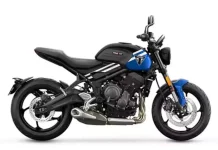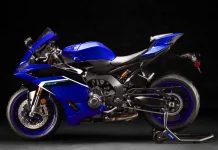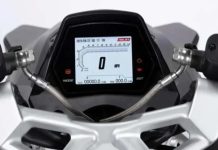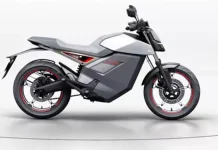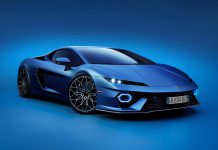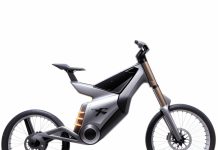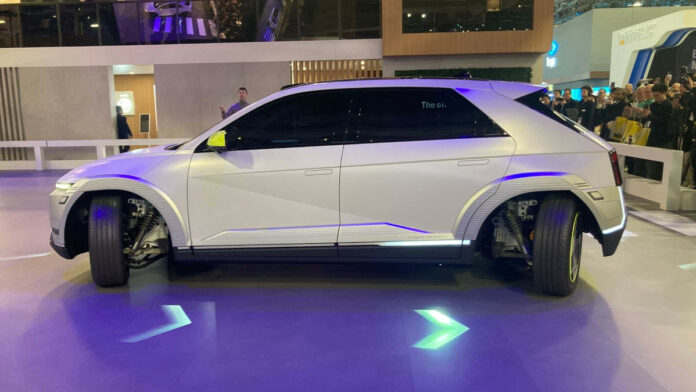How Electric Cars Learned to Walk
Hyundai stunned CES crowds with their Mobion concept car driven by revolutionary e-Corner tech allowing each wheel to rotate 90 degrees and drive omnidirectionally. This enables paradigm-shifting maneuvers like flawless sideways crab-walking, perfect diagonal swerving, and zero-turn spins within impossibly tight spaces.
Hyundai Mobis aims to complete e-Corner development by 2025, with Kia desperate to integrate it into their autonomous delivery vehicles. Early commercial fleet adoption could demonstrate its immense potential to redefine mobility. Though some capabilities may overwhelm human drivers, e-Corner represents an exciting mobility transformation that electric, connected and self-driving vehicles uniquely unlock.
It made waves at CES 2023 with their Mobion concept and its remarkable “crab-like” driving capabilities enabled by the groundbreaking e-Corner system. This technology that allows each wheel to rotate and drive independently could redefine mobility when it hits the market.



How e-Corner Works to Unlock Game-Changing Vehicle Maneuverability
The key functionalities that set e-Corner apart are:
- 90 Degree Wheel Rotation – Each wheel can pivot up to 90 degrees left or right. This is a massive upgrade from current production car 4-wheel steering systems that may allow rear wheels to rotate 10 degrees or so.
- Omnidirectional Drive Capability – Each self-rotating wheel is also powered by its own dedicated electric motor. So each corner’s orientation and speed can be precisely controlled.
This fusion of extreme steering angle plus omnidirectional drive unlocks maneuvering capabilities previously unheard of in a road-going vehicle.
Groundbreaking Maneuvers Enabled by e-Corner Technology
With each wheel able to drive and rotate independently, the Mobion concept can seamlessly execute moves like:
- Crab Walking Sideways – Rotating all 4 wheels 90 degrees left and driving sideways into a tight parking spot.
- Flawless Diagonal Movement – With opposing corners pointed at 45 degree angles, smoothly swerving around obstacles.
- Spinning in Place – Creating a seamless pirouette by coordinating all 4 wheel trajectories and speeds precisely.
- Zero Turn 180 Maneuver – Executing perfect 180 degree switchback turns within an impossibly small footprint.
These dramatic capabilities signal a genuine paradigm shift in vehicle mobility once in production.
Target Launch Timeframe for e-Corner Vehicle Integration
Hyundai Mobis has set an ambitious target to complete e-Corner development by 2025. This would allow the first production integrations to hit the roads around 2030.
Kia’s design director says e-Corner is “perfect” for nimble autonomous delivery vans the brand is planning. Mobility fleets appear positioned as early adopters that could demonstrate the immense potential. As costs scale, private consumer ownership of e-Corner-enabled vehicles may quickly follow.
Why e-Corner is Optimized for Commercial Vehicles Initially
There are a few key factors that position commercial vehicles for early e-Corner adoption:
- With 2 motors per wheel plus associated controls, e-Corner will carry a cost premium when first launched. Fleets justify the investment more readily.
- Delivery vans with higher ground clearance accommodate e-Corner’s bulky in-wheel motors without interior space sacrifices.
- Handling the steering complexity they enable takes self-driving capability which commercial autotransports are moving towards.
Eventually this class-defining innovation could become approachable for mainstream buyers as well.
The EV Connection That Allows This Mobility Breakthrough
The extreme demands of coordinating 4 wheels that can each rotate 90 degrees and drive autonomously requires advanced electronic and software capability. Attempting this through mechanical linkages alone would be a disjointed usability disaster.
But electric vehicles with dedicated motors powering each wheel independently are uniquely suited to such automated coordination. The EV revolution is just beginning to demonstrate its potential for introducing groundbreaking advancements like e-Corner.
This fusion of electric drive characteristsics with autonomous controls is why Mobion represents mobility 2.0 brought to life.
Frequently Asked Questions About e-Corner Tech Integration
What types of driving maneuvers are enabled by e-Corner that aren’t possible today?
With each wheel able to rotate 90 degrees and drive omnidirectionally, e-Corner allows seamless sideways crab-walking, flawless diagonal movement, swift u-turn spins in place, and zero-turn 180 maneuvers within an impossibly tight space.
When will I be able to buy an e-Corner equipped vehicle?
Hyundai Mobis aims to complete development by 2025. This could allow the first integrations in commercial delivery vehicles around 2030, with private consumer models potentially following a few years after that.
Why would e-Corner be better suited to commercial vehicles initially?
Commercial EVs like robotic delivery vans can more easily accommodate the higher cost and bulky components. They also benefit from e-Corner for navigating cramped spaces. And autonomous driving capability better manages the complex omnidirectional wheel coordination involved.
What is unique about electric vehicle design that enables the e-Corner breakthrough?
Conventional vehicles rely on mechanical linkage through a single driveshaft to control all wheels simultaneously. But EVs have independent motors powering each wheel which can be precision automated by software for maneuvers like seamless sideways driving.
This fusion of EV drive architecture and autonomous controls is essential for commercializing extraordinary innovations like the e-Corner system.
Could e-Corner capabilities confuse human drivers and make vehicles less safe?
Yes, the myriad of unprecedented omnidirectional movements enabled could overwhelm typical human drivers. This is why Hyundai Mobis says the most bewildering capabilities will stay confined to commercial autonomous vehicles. For passenger cars, keeping the operation intuitive remains key.
As this brief FAQ demonstrates, e-Corner represents transformative mobility potential in the making. We are just beginning to glimpse innovations that electric, connected and autonomous vehicle technology synergies could unlock. While early integrations will sensibly focus only on what’s logical, the future promises to be wildly fun!
Conclusion
Hyundai Mobis’ e-Corner technology represents a true breakthrough in mobility enabled by electric vehicles. The ability to precisely coordinate each wheel’s orientation and speed unlocks game-changing maneuverability once confined to sci-fi realms.
While development hurdles remain, the promise is scintillating. e-Corner could redefine how future self-driving delivery vehicles and eventually consumer cars navigate tight spaces.
With working prototypes already stunning crowds, the spark of imagination has been lit. As automakers and suppliers race toward production, cheering them on means glimpsing a radically more nimble wheeled future.
When you next spot complex maneuvers from an autonomous pod or see vehicles pirouetting within impossibly tiny footprints, remember the revolution began at CES 2023. Hyundai turned imagination into reality by teaching cars to walk sideways and spin on a dime. Join us in eagerly anticipating how mobility’s status quo will be reshaped as this capability spreads!



